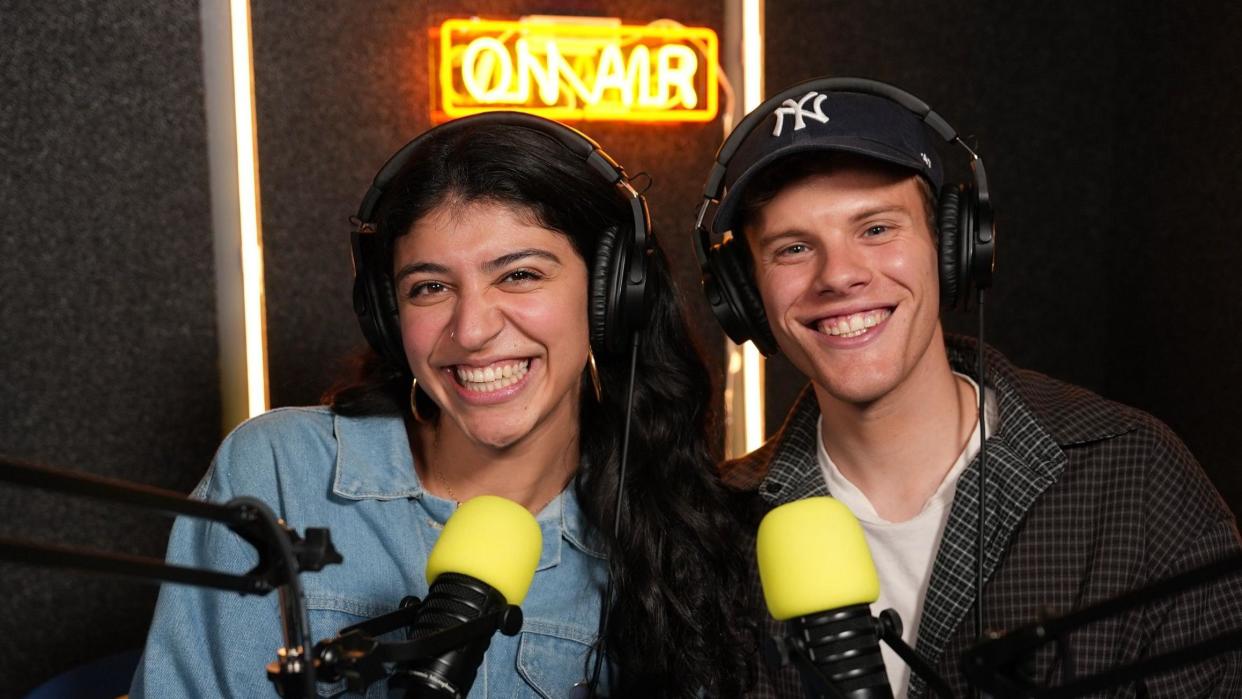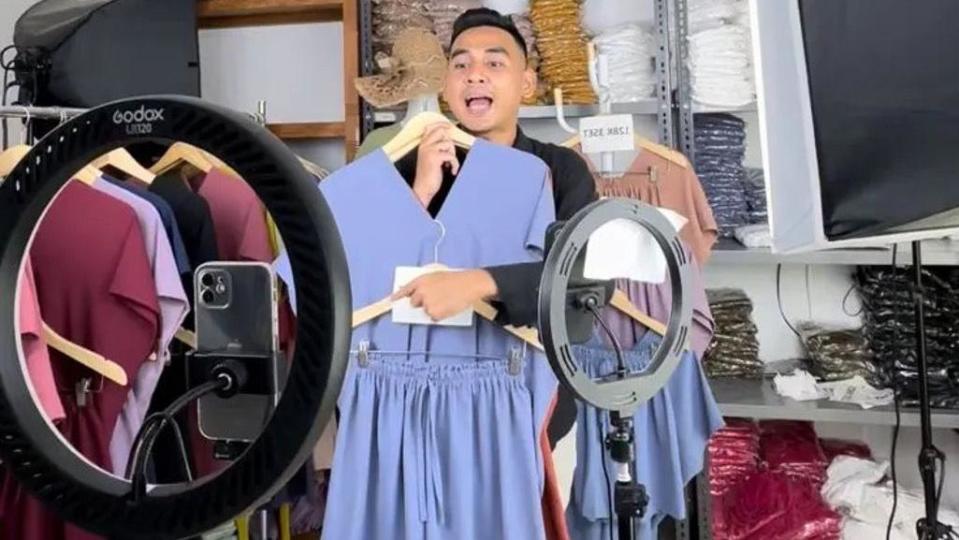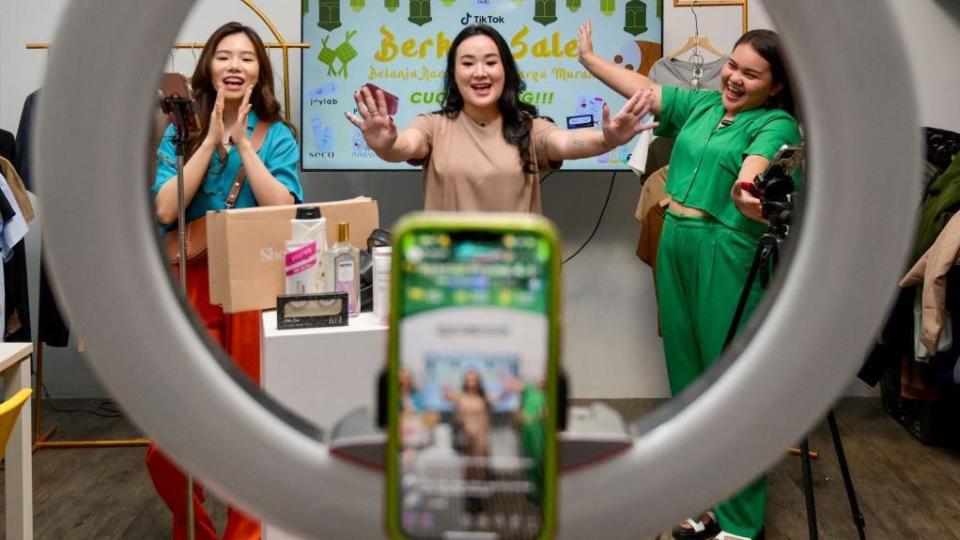The battle for Gen Z social shoppers

Shopping habits have not been the same since the Covid pandemic and resulting lockdowns.
For many, and particularly younger shoppers, it saw the lines blur between social media and e-commerce.
Unable to shop in person, and with TikTok downloads soaring, a trend began that would go on to be described as a cultural phenomenon: #TikTokMadeMeBuyIt.
The hashtag, where users post what they’ve bought thanks to recommendations about products on the app, has now been posted more than seven billion times.
For Lilia Souri and AJ Pulvirenti who co-host the marketing podcast "Gen Z on Gen Z", TikTok is winning with their generation.
"It’s become one of the biggest because of how advanced the algorithm is, and because, before TikTok Shop even was created, we were seeing shopping behaviours happening on TikTok as a whole,” says 27-year-old Lilia Souri.
“You can purchase a product directly on the platform, and then continue scrolling, in a cycle of watch, shop, repeat,” her co-host AJ Pulvirenti, 25, adds.
Social shopping is a big market and growing fast. In 2023 globally it was worth $570bn (£446bn), and is forecast to be worth more than a trillion dollars by 2028, according to estimates by Statista.
While TikTok is one of the big players, its position looks vulnerable. TikTok could be banned in the US unless it is sold by its Chinese parent company ByteDance.
So where would that leave social shopping?
If you look at the number of buyers, then Facebook is still the biggest presence in social shopping, according to Jasmine Enberg, chief social media analyst at E Marketer.
Most of its transactions take place on Facebook Marketplace, “one of the few places where Gen-Z and young people still go to on Facebook,” she adds.
But if you're looking at the percentage of users who actually buy something, then TikTok is ahead, says Ms Enberg.
Data from US-based E-marketer suggests 40% of TikTok users in the US will make at least one purchase on the platform this year, in front of both Facebook and Instagram.
“It’s a very important activity on the app, especially for its users,” says Ms Enberg.
Keen not to be left out, Amazon added a Consult-a-Friend feature last year, allowing customers to ask friends for advice while scrolling through its app.
Gen Z podcaster AJ Pulvirenti is sceptical about these new features.
“When a platform just tries to replicate something from another platform and doesn't offer anything very new or intriguing about it, it's not going to make people feel inclined to switch from something that they're used to,” he says.
A recent study by market-research firm Data.ai suggests that Gen Z spend around two hours a day on TikTok, compared to a little less than 10 minutes on Amazon.

Perhaps TikTok's experience in Indonesia might have some useful lessons.
In 2021 it became the first country to pilot the app's e-commerce service, and became one of the biggest markets for TikTok Shop.
But with local commerce suffering in the wake of the pandemic, the government introduced rules last October to protect local retailers, which forced TikTok Shop to close.
For 26-year-old entrepreneur Evo Syah it was a major blow.
“It’s hard for me, but what I can do?” he says recalling the tough decisions he had to make.
“I just start my business for one year, and then they shut me down,” he says.
But two months after the closure, TikTok agreed to invest $1.5bn in Indonesia’s biggest e-commerce platform Tokopedia, meaning sellers like Evo Syah and millions of others could return to the app.
The 26-year-old said he “never felt happier”. But not everything went back to normal.
"Before the TikTok shop closed I could get sales like 20 million rupiah (£966) daily. But after it reopened again that’s down to 10 million rupiah (£483),” he says.
Mr Syah sells most of his products on livestreams, a selling method which has boomed in popularity in Asia, but according to Ms Enberg has failed to take off in the UK and US.
“Indonesia is a very different commerce landscape to the US,” she says.
However, in both Indonesia and the US, TikTok Shop has been crucial for a lot of small and local merchants, she adds.
“Many of them don't really have another place that is as powerful as TikTok.”

Looking ahead to a potential US ban, Ms Enberg says it would send ripples through the world of social shopping.
“Instagram Reels is the most natural fit for a lot of displaced TikTok users. But we'll probably also see a rise of new apps."
Gen Z podcast hosts AJ Pulvirenti and Lilia Souri agree: “In a world where maybe TikTok is banned. Those behaviours are still going to exist and they're still going to thrive,” Lilia says.
“In a world where this may happen. I think this next big thing has yet to be created,” adds AJ.


